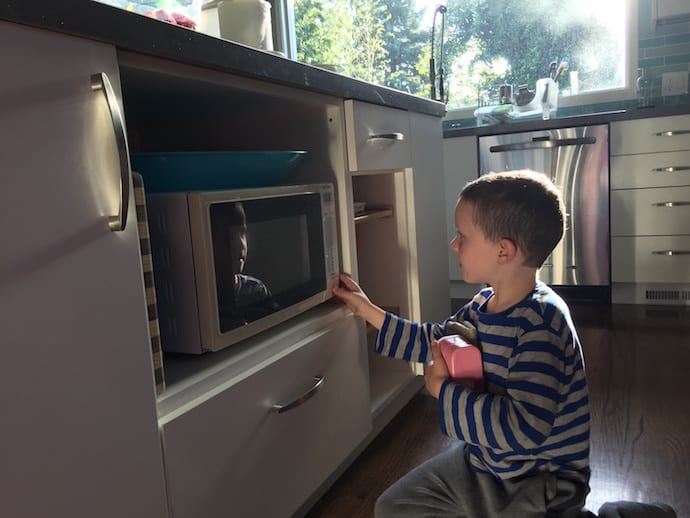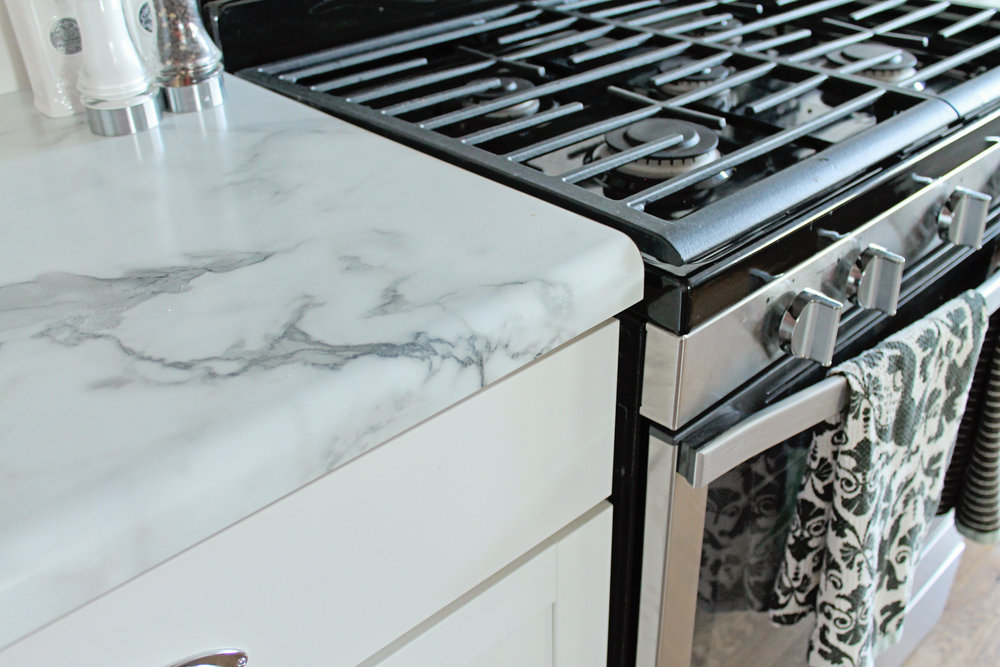Kid-Friendly Kitchens
Are most surfaces in your house sticky? Are there crayon masterpieces on your walls? Do you seem to only exist to supply snacks and make meals?
If you can relate you probably have little ones of your own or if you have kids that spend a lot of time in your home. Either way, you know how important it is that your kitchen works to meet their needs.
But that doesn’t mean you have to sacrifice an adult aesthetic in the heart of your home.
We’ve seen it all – and we’re here to share what we’ve learned to help you get the best of both worlds: a kitchen that is not only safe and welcoming for children but also stylish and on-trend for you!
Make it durable
Some materials just aren’t made for kids. For example, anything porous, like granite or marble, may stain or absorb spills. And we know messes are more likely to happen with little hands around.
We can recommend many great non-porous options, like Quartz or Corian, for your countertops, which are resistant to almost anything kids can throw at them and they’re easy to clean for everything else. They’re also available in almost any color and finish you could want.
But what those little feet running around on is important too. For flooring, consider linoleum. It’s soft on the feet, customizable and again – the easiest option to keep tidy.
Think like a child
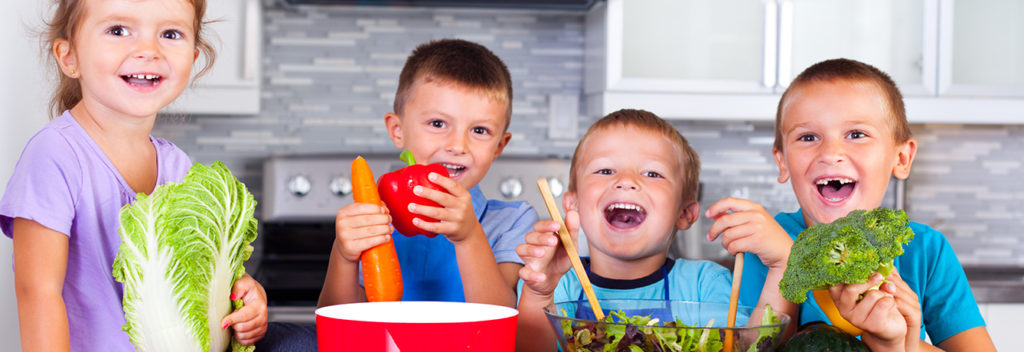
Whether you’re renovating an existing space or just reorganizing what already exists, your kitchen has the potential to be a great place to encourage independence for all ages.
For a quick snack, you might encourage kids who are old enough to use a microwave at a fairly young age, considering its low risk and doesn’t require a lot of skill.
If that’s the case, you should place your microwave lower than you might otherwise. You don’t want anyone climbing up onto stools or chairs to heat something up and risk falling over.
You should also make the foods you want your kids to eat the most easily accessible. Healthy snacks in low cupboards, that cookie stash that you’d rather your children not access on their own should be put high up in a pantry.
On the flip side, store things you don’t want your kids to access far out of reach.
For example, sharp knives shouldn’t be put in drawers where curious minds could get to them. Opt to use a magnetic strip high out of children’s reach. This has the added benefit of giving you easy access to knives when you need to chop and not taking up precious drawer or counter space.
Keep it all accessible – and safe
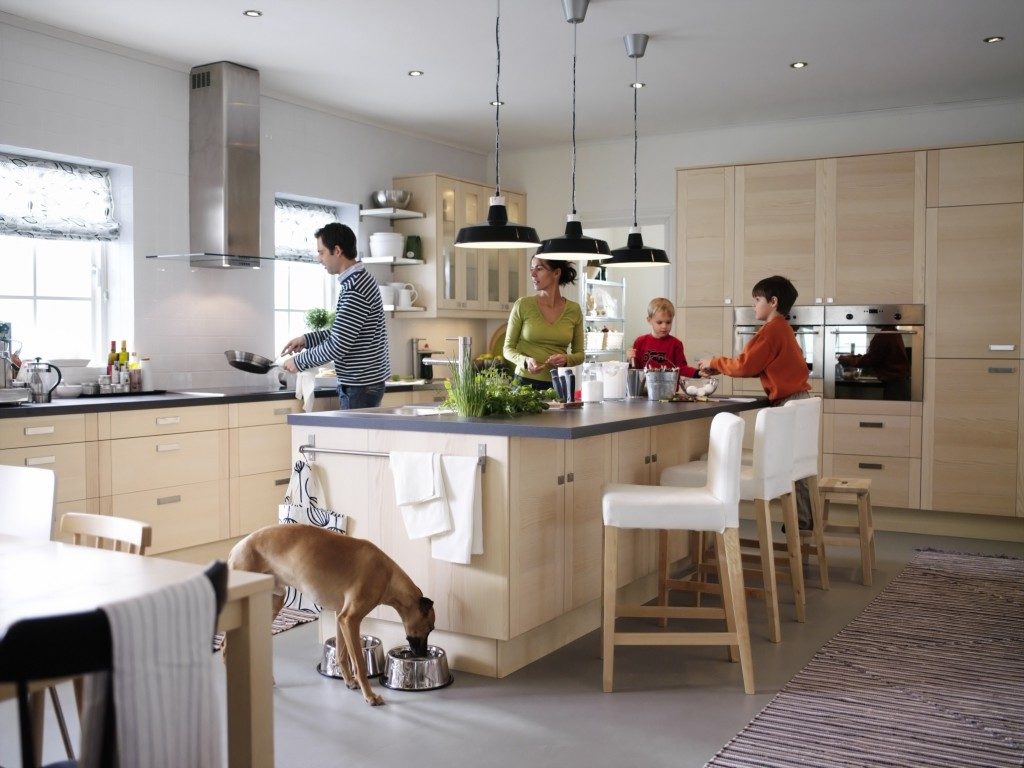
Have you heard of the kitchen triangle? To break it down, your main three areas of the kitchen –fridge, sink, and stove – should, you know it, form a triangle in your design.
As with any good work triangle, you’ll want the refrigerator and the sink closest to the access points of the kitchen, and the stove furthest.
This ensures that helpful hands can wash dishes and hungry hands can grab a snack while you’re cooking without distracting you. And with kids, it serves a double purpose. Children love to run and play, so keeping the stove away from high traffic areas will reduce the chance they’ll knock a pot off the element or touch a hot oven.
No matter how much space you’re working with, how old your kids are or what style you’re aiming for, we can make sure it all comes together. Like most things in a family, it’s all about balance.
Kitchen Safety Tips to Teach Your Kids
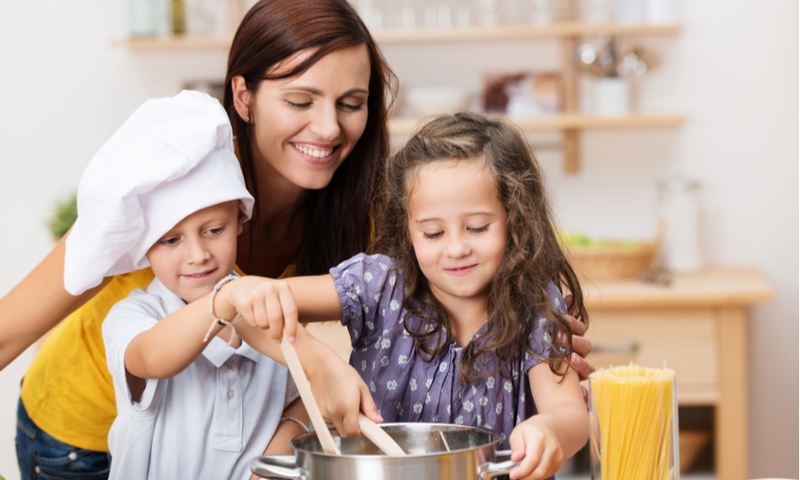
1. Always ask an adult’s permission before cooking in the kitchen
This may seem obvious at first, but as your kids get more comfortable and independent in the kitchen they will may forget to ask at times. Remind them that an adult has to be present to make sure that he stays safe even if he is doing all the work.
Little hands often carry big germs. Clean hands are so important to food safety and should be the first step before touching any food or appliance. Just remind your little ones what they have been touching and ask them if they want it in their food.
Cleaning spills and messes as you go will prevent slips and falls. Plus it makes it easier to have a clean kitchen at the end.
4. Use a Potholder or Towel to Carry and Hold Hot Items
Trying to handle hot plates, pots or appliances can cause burns or you to drop food on the floor. Try getting a colorful towel or potholder that is just for them so they will be excited to use it.
5. Practice Good Knife Safety Tips
First, start with plastic to-go knives at the toddler age than at the preschool and kindergarten years upgrade to more kid-friendly plastic knives. Teaching your kids the proper way to use a knife is safer than teaching them to avoid it altogether.
6. Ask Before You Lick
Kids like to lick EVERYTHING… plates, spoons, their fingers (even the countertops… don’t judge us). To make sure they don’t consume raw ingredients that can make them sick, let your kids know that they have to ask before they can lick.
7. Listen, Listen, Listen
This really should be rules number 1, 2, and 3. Cooking with your kids is a great way to build listening skills and practice following directions. This is a great way to make sure they don’t harm themselves in moments of excitement because they touched something that may be hot, sharp or slippery.
You can eliminate the most serious dangers by taking the following precautions:
- Store strong cleaners, lye, furniture polish, dishwasher soap, and other dangerous products in a high cabinet, locked and out of sight. If you must store some items under the sink, buy a child safety lock that refastens automatically every time you close the cupboard. (Most hardware and department stores have them.) Never transfer dangerous substances into containers that look as if they might hold food as this may tempt a child to taste it.
- Keep knives, forks, scissors, and other sharp instruments separate from “safe” kitchen utensils, and in a latched drawer. Store sharp cutting appliances such as food processors out of reach and/or in a locked cupboard.
- Unplug appliances when they are not in use so your child cannot turn them on. Don’t allow electrical cords to dangle where your child can reach and tug on them, possibly pulling a heavy appliance down on himself.
- Always turn pot handles toward the back of the stove so your child can’t reach up and grab them. Whenever you have to walk with hot liquid—a cup of coffee, a pot of soup—be sure you know where your child is so you don’t trip over him.
- When shopping for an oven, choose one that is well insulated to protect your child from the heat if he touches the oven door. Also, never leave the oven door open.
- If you have a gas stove, turn the dials firmly to the off position, and if they’re easy to remove, do so when you aren’t cooking so that your child can’t turn the stove on. If they cannot be removed easily, use child-resistant knob covers and block the access to the stove as much as possible.
- Keep matches out of reach and out of sight.
- Don’t warm baby bottles in a microwave oven. The liquid heats unevenly, so there may be pockets of milk hot enough to scald your baby’s mouth when he drinks. Also, some overheated baby bottles have exploded when they were removed from the microwave.
- Do not use small refrigerator magnets that your baby could choke on or swallow.
- Poison control centers have reported an increase in poisonings caused by concentrated, single-use laundry detergent packets. Even just a small amount of concentrated gel or powder can cause very serious respiratory or gastrointestinal problems or eye irritation. Keep these laundry packets high out of reach of children and do not permit young children to handle them.
Contact us for a design professional in-home consultation to help you create a space that works for everyone in your home!
[gravityform id=”1″ title=”true” description=”true”]

